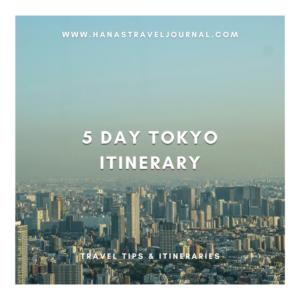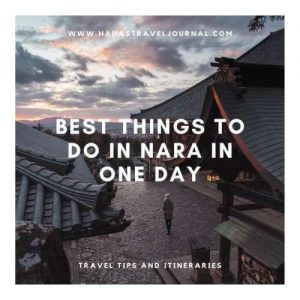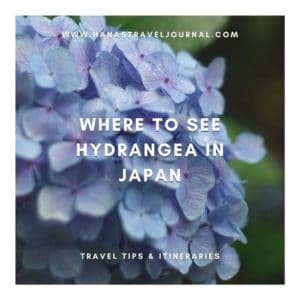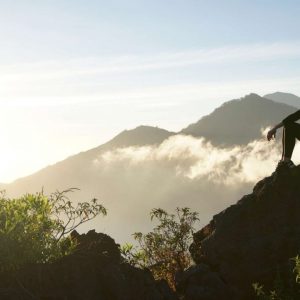Introduction to Shikoku
Shikoku is one of the four main islands of Japan – Honsu, Kyushu, Hokkaido and Shikoku. It is the smallest and the least visited of the four. Well, to be precise, it’s the least visited by international tourist, because Japanese people like to come here for vacations and short getaways. Because Shikoku is not so far from Osaka, we decided to drive there and spend a weekend in its pristine nature. As we didn’t have enough time to visit the whole island, we explored only the northern Kagawa and Tokushima prefectures, but I can tell you there is so much to do and see that one weekend wasn’t enough! shikoku travel guide
The island of Shikoku is sparsely populated and it synonymous with natural beauty, roughed mountains and Pacific coastline. It is home to remote sacred temples visited by pilgrims from all over Japan, which makes it one of the most spiritual places in the country. Because the north of the island was quite isolated over the years and is not as popular among travelers, it is described as the last piece of real Japanese countryside. In this article I would like to show you what you can do here, and why you should find time in your Japanese itinerary to visit this spectacular place. shikoku travel guide



Best places to visit and top things to do
IYA VALLEY & HI-NO-JI BEND
Iya area is one of the top attractions in Shikoku and a place not to be missed! It is filled with dramatic valleys and emerald waters of Iya River and because of its majestic views it is praised by travel specialists who included it into Michelin Green Guide.
Iyakei or Hi-no-Ji Bend is one of the most famous sights of Iya. At this point of the valley, the river strikingly bends to an opposite direction providing travelers view like no other. No hike here is needed, you can stop your car on a rest spot along the way to enjoy the views from the above. This place is beautiful any time of the year and at any weather. We arrived during a mild rain and the smoking lush green mountains in the backdrop created an unbelievably beautiful scene!
CHICHIBUGAHAMA BEACH
Chichibugahama Beach is located on the north-west of Shikoku in the town called Mitoyo. It is beautiful and very popular place that is frequently photographed. Low tide here creates large pools that reflect the colors of the sky which makes this particularly scenic especially at sunset! Unfortunately when we visited it was cloudy so no epic sunset was happening, but it was still a lovely place to visit. The beach is home to a crab colony, you can walk around or have a beer on a terrace of nearby restaurants. The whole town has very chilled beach-y vibe.

OBOKE AND KOBOKE GORGE
Oboke and Koboke Gorge are translated as big step danger and little step danger and both are deep canyons formed by rushing Yoshino River 100 to 200 million years ago. They have 8 km long walls of sculpted rocks that you can view from the road above, or take a boat ride from below. Either way it is an impressive sight!
NARUTO WHIRPOOLS
If you are arriving to Shikoku by car via Awaji Island, don’t forget to stop in Naruto right after you cross the bridge to see its natural whirlpools. They appear roughly every 6 hours between low and high tide and can be seen from several viewpoints around or from a boat. Under ideal conditions they can have up to 20 m in diameter, but even if you miss them, the viewpoints will offer you beautiful view over the Awaji Island and the bridge.
VINE BRIDGES OF IYA VALLEY
The most popular things to do in Iya Valley is visiting these unique vine bridges. From the original 13 vine bridges that used to connect secluded Iya Valley with Mt. Tsurugi in the past, only three remained until today. The very first one was suspended as long as 800 years ago and a legend says that it was made by ancient Heike residents to be able to escape in the woods if pursued by invading warriors. True or not, they were an important everyday route for the local people, and they were used by hunters, traders, pilgrims etc.
Iya-no-Kazurabachi Vine Bridge is located at the beginning of Iya Valley and it is swaying in the height of 14 m above flowing Iya River. There is beautiful Biwa waterfall nearby so you can easily visit both. The other two bridges are next to each other and they are a bit smaller. They are called Oku-Iya Niju Kazurabashi, or Double Vine Bridges. They are tucked away in the deeper end of Iya and they are referred to as “husband and wife” bridges. The surroundings are very tranquil and in hot weather you can even dip in the cold waters of the river.
IYAKEI - STATUE OF PEEING BOY
One of the most dangerous spots in Iya Valley is Nana Magari, “the seven curves”. It is beautiful but uncertain landscape, where for about 20 km the emerald river flows through the green mountains, creating dramatic cliffs. About in the middle of the gorge by the road, you can find a small statue of a peeing boy standing a rock cliff with 200 m deep drop off.
Rumor has it that travelers and local boys would climb up to Nana Magari to relieve themselves, while demonstrating their daring to anyone who cared to watch. At such dizzying height and in such dangerous position, one really needed a calm head and steady feet to make the difference between satisfaction and sudden death. The bronze statue was built in 1968 with intention of deterring further “pee offs” by local daredevils.
THE SCARECROW VILLAGE
Nagoro village belongs to one the strangest places I’ve got a chance to visit in my life. It is the very last village of Iya and the drive there can be time consuming through the forests, but it is worth visiting, because it hides one of Japan’s great oddities. The official name is Nagoro, but people call it Kakashi-no-Sato or the Scarecrow village and that it is exactly what you will find here.
The small Japanese countryside villages and towns are slowly dying and especially in secluded Iya Valley. Young locals don’t see their future there so they move out. One day an original inhabitant came back to Nagoro after few years living in the city and she found the village (almost) empty. That made her sad so she created her first scarecrow that looked like her father. Then she got an idea to why stop just there? And so she made one scarecrow for every person that used to live in Nagoro and distributed them around the village in positions like they working, talking to each other etc.
I will not lie, it is a little bit creepy, especially when there are no other tourists and it rains (just like during our visit). But it is very unique and odd and definitely something you won’t find anywhere else. There is no admission fee, you can freely walk around, go inside the school and abandoned public house and simply hang out with the Nagoro’s inhabitants.
GREAT SETO BRIDGE
Very different from the old vine bridges – Great Seto Bridge is created by a series of smaller bridges connecting Okayama on Honsu and Kagawa prefecture on Shikoku. With its 13.1 km it is the world’s longest two-tiered bridge and view on it is simply spectacular. On the upper tier is highway and railway tracks (Seto-Okashi line) are on the lower one. The bridge was finished 1988 and it takes about 20 minutes by car or train to cross it. Before, you could take only ferry which lasted over one hour.
WHITE WATER RAFTING
The thrill-seekers will have a blast conquering the wild white-waters of Yoshino River in the Oboke and Koboke Gorge. This is actually the birthplace of Japanese rafting and you can choose from wide variety of tours from family-friendly to class 4 rapids.
CHIIORI HOUSE
Chiiori House is a traditional Japanese dwelling with thatched roof, located in the dreamy center of the Iya Valley. It is part of the Chiiori Trust, a non-profit organization that takes care of preserving these traditional thatched houses settled in the misty hillside. The mission behind Chiiori is for people to find in Japan a place that retains its original beauty and to build an eco-friendly community rooted in Japanese culture. The Chiiori Trust is run by Alex Kerr, an American writer and Japanologist, who purchased it in 1973. The houses are open for tours with prior reservation but if you are really interested in experiencing the traditional life in Iya, you can book and over-night stay!
FIND YOUR INNER CHILD IN ONE OF THE AMUSEMENT PARKS
If you feel like you’ve had enough of hiking and temples and you’d like to have some fun, there are two fun parks located in the Iya-Oboke area.
Iya Fureai Park is not so much of an amusement park, but it offers its visitors wide range of activities. It’s spreads on the banks of Iya River, where you can try fishing, there’s a monorail traversing 430 m through the valley along the mountainside gardens or the more adventurous ones can try a zipline! In the summer you can stay in the nearby campground. The park is open from March to November.
The other Kenko-to-Fureai-no-Mori Park is not far from Miyoshi city on the north and it’s more of a family friendly destination with adventure castles, multiple playgrounds and slides in lovely wooden setting. The park is located on a hilltop with beautiful views over the Yoshino River Valley and the Shikoku Mountain Range. For families with children who wish to stay nearby, there are over-night bungalows and barbecue spots available. The park is open all year round.
TEMPLES AND OLD TOWNS
Northern area of Shikoku, especially around Miyoshi city is known for its stunning hilltop temples and it is a traditional place for pilgrims to come here from all over Japan. The most historically valuable temples are Unpenji Temple, Hashikuraji Temple and Takiji Temple. The temples are usually located not far from villages with historical houses and traditional townscapes. The most beautiful ones are Ikeda and Tsuji, because both of these cities played an important role in tobacco trade which allowed their citizens to build lovely homes.
HIKE MT. TSURUGI
Mount Tsurugi, or Tsurugisan, is with its 1995 m the second highest mountain on Shikoku and it’s located at the remote end of Iya Valley. Its name translates as “sword” but its peak is not sharp thus the trail up is quite an easy one. A chairlift can help with the bigger portion of the hike, its starting station is located Minokoshi. The chairlift is quite fun, as the seats are single (not double as I am usually used to). One-way trip costs 1030 yen and return 1860 yen.
Tsurugisan is a place of worship for a Japanese folk religion called Shugendo and it’s often referred to as the holy mountain. On the top, apart from beautiful views, you can visit also a shrine dedicated to this religion, there are multiple mountain huts, weather towers and a wooden boardwalk that leads you various viewpoints.
TRY ONE OF THE UNIQUE WORKSHOPS
In Kagawa prefecture you can connect with the local people through hands-on learning experiences such as making your own soba noodles or wild game sausages (of wild boars and deer). Soba noodles are buckwheat noodles typical for this region and the forests are full of wild animals that are hunted for its meat. Both experiences need to be booked at least several days in advance.












Where to stay in Shikoku
North Shikoku is quite a vast area, even though it may seem like on a map. A thing to consider is the fact, that it is a mountainous region so the even the distance is not far, it can consume a lot of time to get there. Choose your accommodation based on your preference, what you would like to do and see in Shikoku. Here are few of my personal recommendations: shikoku travel guide

Local specialties to try
Rather than “where to eat” I’d like to present you some local specialties of north Shikoku that you can find in many restaurants in this region. Throughout Japan, this area is known for hearty, natural flavors, using only local ingredients. shikoku travel guide
- Iya Soba – soba noodles are made of buckwheat, which is largely grown in Iya Valley. Iya soba noodles are home-made, short and thick and always accompanied by delicious broth with various toppings.
- Omiki-Nabe – local hot-pot usually consisting of mix of regional miso, sake, soy sauce and pork.
- Heike Gozen – bento box of local seasonal farm products. (*Note – bento box is Japanese lunch box consisting of different small nutritious dishes, it’s meant to be eaten “on the go”)
- Hirara Yaki – this dish is cooked on large flat stone – a “wall” of miso paste encloses a stew of river trout, tofu and vegetables. This dish is quite unique and very aromatic and usually needs to be booked in advance in some accommodations and restaurants.
- Grilled sweetfish “ayu” and river trout “amego” – usually served on a skewer, grilled over charcoal and coated in salt crust.
- Wild Game Meat – the deep mountains of Iya Valley has been an amazing place for hunting since a long time ago. You can order a variety of meats of wild boar or deer served and prepared in different styles.


Getting there and around
The easiest way to get to and around Shikoku is definitely by car. There are many rental companies in Japan and the prices for cars are more than fair. The petrol is not expensive, but you have to count with toll roads that can be pretty pricey. We usually hire a car with friends and split the cost. The island is connected to Honsu with 3 bridges – Onaruto, Iwakurojima and Kurushima Bridge. shikoku travel guide
On Shikoku there are 3 domestic airports – in Kochi on the south, Tokushima on the west and Takamasu on north. They are connected to many major cities on Honsu. Other options are taking a ferry from Wakayama to Tokushima, or taking the JR trains. Shikoku is well connected by railways, but they can’t take you to some rural villages in the mountains so, I would really recommend hiring a car.



Best time to visit Shikoku
Shikoku has the oceanic climate and you can expect rainfall in any month of the year. The warmest months are from May to October when average temperature doesn’t fall lower than 22 degrees of Celsius. June and September are the wettest months and January and February are the coldest. Overall, Shikoku is enjoyable in any weather, because in winter there are opportunities to go skiing in Ikawa Ski Resort, in late March you can enjoy cherry blossom season in Sakuragaoka Park and in November the whole island changes into autumn colors. shikoku travel guide
This guide is just a tiny slice of all the things Shikoku offers. It is a very unique and still quite secluded destination with rich local heritage, cultural sights and glorious nature. I would highly recommend exploring this region, especially when you’ve been to Japan before. shikoku travel guide
If you are interested in more unique places to visit in Japan, or how life in Japan is for expats, check out my other articles HERE.
5 Day Tokyo Itinerary
Tokyo is the largest city in the world, so it can be a little bit daunting to visit it for...
Best Things to do in Nara in One Day
Nara is the capital of Nara prefecture in Japan and because of its close proximity, it’s a popular “one-day trip”...
Where to See Hydrangea in Japan – Kansai Area
Hydrangea season is comparable to the cherry blossom season in Japan for a good reason. Just like with sakura, the...
Ultimate Guide to Seasonal Flowers in Japan – Kansai Area
Culture of Flower Viewing in Japan Seasons are a big theme in Japanese culture. Each season brings different foods, decorations,...











